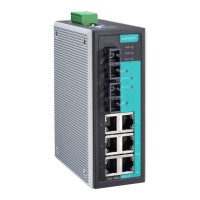
Do you have a question about the Moxa Technologies EDS-408A and is the answer not in the manual?
| Model/Series | EDS-408A |
|---|---|
| Number of Ports | 8 |
| Standards | IEEE 802.3, IEEE 802.3u, IEEE 802.3x |
| Switching Capacity | 1.6 Gbps |
| MAC Address Table Size | 1K |
| Port Type | 10/100BaseT(X) |
| Power Input | 12 to 48 VDC |
| Operating Temperature | -40 to 75°C (-40 to 167°F) |
| Enclosure | IP30 |
| Mounting | DIN-rail |
| Certifications | CE, FCC, UL |
Background on industrial Ethernet and automation applications.
Overview of the MOXA EtherDevice Switch product line.
Lists included hardware and documentation with the switch.
Lists available add-on products for the switch.
Key features like Turbo Ring, VLAN, and QoS.
Features tailored for harsh industrial environments.
Methods for configuring and managing the switch.
Initial setup and configuration via the serial port.
Network configuration and management via Telnet.
Network configuration and management via web interface.
Enhancing security by disabling remote access methods.
Essential network and system parameters setup.
Managing user access levels and security settings.
IP address-based access control configuration.
Configuration settings for individual network ports.
TCP/IP network parameter configuration.
System time configuration and NTP server setup.
Hardware switch configuration for redundancy.
Firmware and configuration backup via TFTP server.
Firmware and configuration backup using local PC.
Restoring switch settings to factory defaults.
Setting up Simple Network Management Protocol.
SNMP authentication and access level configuration.
Configuring SNMP trap server destinations.
Overview of network redundancy protocols.
Explanation of MOXA's proprietary ring protocol.
Detailed setup and configuration of Turbo Ring.
Explanation of Spanning Tree Protocol (STP/RSTP).
Detailed setup and configuration of STP/RSTP.
Implementing Quality of Service (QoS) for traffic.
Explanation of traffic prioritization methods.
Mapping traffic to priority queues.
Network segmentation using Virtual LANs (VLANs).
Configuring VLANs on a per-port basis.
Controlling bandwidth usage per port.
Detailed setup for rate limiting.
Configuring the event notification system.
Setting up email alerts for specified events.
Specifying which events trigger email notifications.
Configuring mail server and recipient details.
Setting up hardware relay alerts for events.
Specifying events that trigger hardware relay alerts.
Viewing a list of active relay warnings.
Enabling automatic port recovery after disconnections.
Enabling or disabling the fast recovery feature.
Automatic IP address assignment for connected devices.
Detailed setup for automatic IP address assignment.
Tools for diagnosing network problems.
Port mirroring configuration for traffic monitoring.
Network connectivity testing tool.
Real-time monitoring of switch and network activity.
Monitoring overall system traffic and packet statistics.
Monitoring traffic statistics for individual ports.
Viewing and managing the MAC address table.
Reviewing system events and historical logs.
Launching the MOXA EtherDevice Switch configuration utility.
Discovering devices on the LAN using broadcast search.
Discovering devices by specifying their IP address.
Updating the device firmware to the latest version.
Changing the device's network settings.
Saving the device configuration to a text file.
Loading a device configuration from a text file.
Accessing password-protected devices for management.
SNMP MIB for system information.
SNMP MIB for network interface details.
SNMP MIB for IP layer information.
SNMP MIB for ICMP protocol details.
SNMP MIB for TCP protocol details.
SNMP MIB for UDP protocol details.
SNMP MIB for transmission related information.
SNMP MIB for SNMP agent details.
SNMP MIB for Remote Network Monitoring.
SNMP MIB for bridging functions.
SNMP MIB for RSTP protocol.
SNMP MIB for pBridge functions.
Overview of supported IEEE technologies and protocols.
List of supported Management Information Base standards.
Specifications for physical and console interfaces.
Detailed specifications for optical fiber ports.
Power input voltage and connection type details.
Dimensions, weight, and operating environment conditions.
Compliance certifications and safety standards.
Contacting Moxa for technical support and product information.
Guide for filling out a form to report product issues.
Process for returning products for repair or exchange.
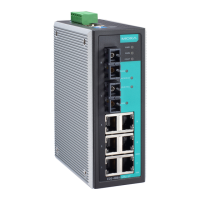
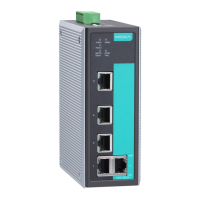
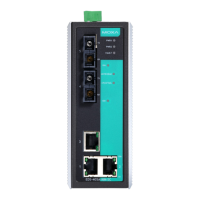
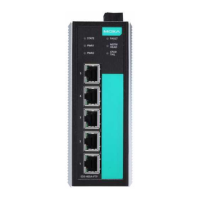
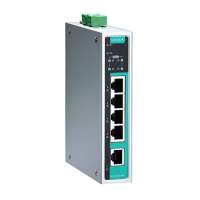
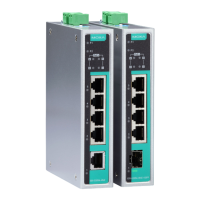
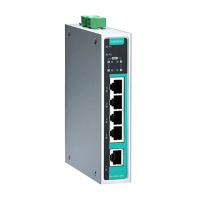
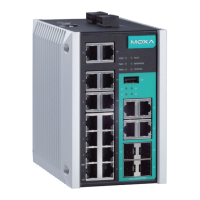

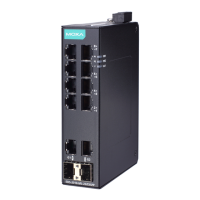
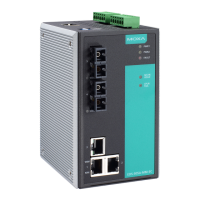

